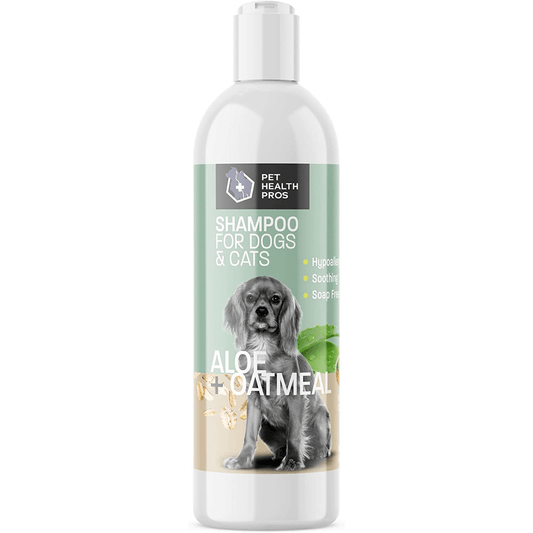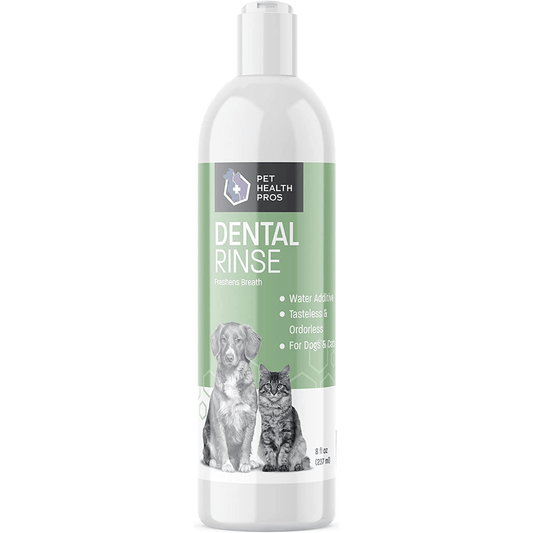Clindamycin is a common antibiotic used in veterinary medicine, particularly for dogs. It's essential to understand how it works, the right dosage, and any potential side effects to ensure the safety and health of your furry friend. In this article, we'll explore everything you need to know about clindamycin for dogs, including its uses, how to administer it, and what to watch out for.
Key Takeaways
- Clindamycin is an antibiotic effective against certain bacterial infections in dogs.
- Dosage of clindamycin depends on your dog's weight and the condition being treated.
- Watch for side effects like vomiting or diarrhea, and contact your vet if they occur.
- Always inform your veterinarian of any other medications your dog is taking to avoid interactions.
- Natural remedies and other antibiotics can be alternatives to clindamycin if necessary.
Overview Of Clindamycin For Dogs
What Is Clindamycin?
Okay, so clindamycin is basically an antibiotic. It's used a lot in both human and veterinary medicine. For dogs, it's a go-to when vets need to tackle bacterial infections. It's not a new drug, but it's still super useful because it's effective against a pretty wide range of bacteria. Think of it as a general-purpose tool in the fight against doggy infections. It's available in different forms, like pills and liquids, which makes it easier to give to your dog, depending on what they'll tolerate. It's good to know about clindamycin for dogs if your vet mentions it.
How Does Clindamycin Work?
So, how does this stuff actually work? Well, clindamycin messes with the bacteria's ability to make proteins. Without proteins, bacteria can't grow or multiply, which eventually leads to their demise. It's like cutting off their supply chain. Clindamycin binds to a specific part of the bacterial ribosome (that's the protein-making machinery) and stops it from doing its job. This action is called bacteriostatic, meaning it inhibits bacterial growth. However, at high concentrations, it can also be bactericidal, meaning it can directly kill bacteria. It's pretty neat how it targets the bacteria without harming your dog's cells directly.
Common Conditions Treated With Clindamycin
Clindamycin is a versatile antibiotic, and it's used to treat a bunch of different conditions in dogs. Here are some of the most common:
- Dental infections: Think abscesses or infections after a tooth extraction.
- Skin infections: Like pyoderma, which is a bacterial infection of the skin.
- Bone infections: Also known as osteomyelitis.
- Wound infections: Especially if they're deep or nasty.
It's also sometimes used for protozoal infections like toxoplasmosis, although that's less common. Basically, if your dog has a bacterial infection that's sensitive to clindamycin, there's a good chance your vet might prescribe it. It's always best to follow your vet's advice, though, because they know what's best for your furry friend.
Dosage Guidelines For Clindamycin
So, you're trying to figure out the right amount of clindamycin for your dog? It can feel a little overwhelming, but let's break it down. Getting the dosage right is super important – too little, and it won't work; too much, and you might see some nasty side effects. Always, always follow your vet's instructions, but here's a general idea of what to expect.
Recommended Dosage Based On Weight
Okay, so the dosage of clindamycin is usually based on your dog's weight. It's typically given in milligrams per kilogram (mg/kg) or milligrams per pound (mg/lb). A common range is around 5.5 to 11 mg/kg (2.5 to 5 mg/lb) of body weight, given every 12 hours. But again, this is just a general guideline. Your vet will consider your dog's specific condition, overall health, and the severity of the infection to determine the exact dosage.
To give you a clearer picture, here's a simple table:
| Dog's Weight (lbs) | Approximate Dosage (mg) every 12 hours |
|---|---|
| 10 | 25-50 |
| 20 | 50-100 |
| 30 | 75-150 |
| 40 | 100-200 |
Keep in mind that these are rough estimates. The actual dosage might vary.
How To Administer Clindamycin
Clindamycin usually comes in pill or liquid form, which can make things a bit easier. Here's the lowdown on giving it to your dog:
- With or Without Food: You can usually give clindamycin with or without food. Some dogs might handle it better with a little something in their stomach to avoid tummy upset.
- Pills: If you're using pills, you can try hiding them in a treat or a small amount of food. If your dog is a pro at spitting out pills, you might need a pill dispenser.
- Liquid: For liquid forms, use the syringe or dropper that comes with the medication to measure the correct dose. Squirt it gently into your dog's mouth, aiming for the side of the cheek.
- Consistency is Key: Try to give the medication at the same time every day to keep the level of the drug consistent in their system.
Signs Of Overdose
Overdosing on clindamycin can lead to some pretty unpleasant side effects. It's important to know what to look for so you can act fast if something seems off. Here are some signs of a potential overdose:
- Severe Vomiting or Diarrhea: Excessive vomiting or diarrhea that doesn't stop.
- Loss of Appetite: A sudden and complete loss of interest in food.
- Lethargy: Extreme tiredness or weakness.
- Neurological Signs: In severe cases, you might see incoordination, tremors, or even seizures.
If you suspect your dog has overdosed on clindamycin, contact your veterinarian or an emergency animal hospital immediately. Time is of the essence, and prompt treatment can make a big difference.
Don't panic, but be prepared. Knowing what to watch for can help you keep your furry friend safe and sound.
Potential Side Effects Of Clindamycin
Okay, so Clindamycin is usually pretty safe for dogs, but like any medication, it can sometimes cause side effects. It's good to know what to look out for, so you can keep your furry friend happy and healthy. I'll break down the common stuff, the more serious reactions, and when you should definitely give your vet a call.
Common Side Effects
Alright, let's start with the usual suspects. These side effects aren't fun, but they're generally not cause for major panic. The most common side effects are usually related to the digestive system.
- Vomiting: Your dog might throw up a little bit. If it's just once or twice, keep an eye on them. If it keeps happening, call your vet.
- Diarrhea: This is another common one. Clindamycin can mess with the good bacteria in your dog's gut, leading to loose stools. Probiotics might help, but check with your vet first.
- Loss of Appetite: Some dogs just don't feel like eating while they're on Clindamycin. Try offering them bland food like boiled chicken and rice.
- Lethargy: Your dog might seem a bit more tired or less energetic than usual. This is usually temporary and should go away after they finish the medication.
Serious Reactions To Watch For
Okay, now for the stuff that's a bit more concerning. These reactions are rare, but it's important to know them just in case. If you see any of these, call your vet ASAP.
- Allergic Reactions: Look for signs like hives, swelling of the face, or difficulty breathing. These are signs of a serious allergic reaction and need immediate attention.
- Severe Diarrhea: If your dog has severe, watery diarrhea, especially if it contains blood, this could be a sign of a serious problem like Clostridium difficile infection. This needs vet attention right away.
- Liver Problems: In rare cases, Clindamycin can affect the liver. Signs of liver problems include jaundice (yellowing of the skin and eyes), loss of appetite, and increased thirst.
It's important to remember that every dog reacts differently to medication. What's a minor side effect for one dog could be a serious problem for another. Always pay close attention to your dog's behavior and physical condition while they're on Clindamycin.
When To Contact Your Veterinarian
So, when should you actually call the vet? Here's a quick guide:
- If you see any signs of an allergic reaction, like hives, swelling, or difficulty breathing.
- If your dog has severe or bloody diarrhea.
- If your dog is vomiting repeatedly and can't keep food down.
- If your dog seems unusually lethargic or weak.
- If you notice any other unusual symptoms that concern you.
Basically, if you're worried about anything, it's always best to err on the side of caution and give your vet a call. They know your dog best and can give you the best advice.
Safety Considerations When Using Clindamycin
Alright, so you're thinking about using clindamycin for your dog. That's cool, but let's pump the brakes for a sec and talk about safety. It's not always a walk in the park, and there are things you really need to keep in mind to make sure your furry pal stays safe and sound.
Pre-existing Health Conditions
Okay, so before you even think about giving your dog clindamycin, you gotta consider if they have any other health problems. Certain conditions can make clindamycin a no-go, or at least require some serious adjustments. For example, if your dog has kidney or liver issues, clindamycin might not be the best choice because these organs are responsible for processing the drug. Also, if your dog has a history of colitis (inflammation of the colon), clindamycin could make it worse. Always, always, always tell your vet about any pre-existing conditions before starting this medication.
Drug Interactions
Mixing meds can be a recipe for disaster, right? Same goes for dogs. Clindamycin can interact with other drugs, either making them less effective or causing some nasty side effects. For instance, it might not play well with certain anesthetics or neuromuscular blocking agents. So, before your vet prescribes clindamycin, make sure they have a complete list of every medication and supplement your dog is taking. This includes flea and tick preventatives, heartworm meds, and even those
Alternatives To Clindamycin For Dogs
Sometimes, clindamycin might not be the best choice for your dog. Maybe they've had bad reactions to it before, or perhaps it's just not working for their current condition. Whatever the reason, it's good to know there are other options out there. Let's explore some alternatives your vet might suggest.
Other Antibiotics
When clindamycin isn't suitable, several other antibiotics can step in, depending on what's being treated. Amoxicillin, for example, is often used for a range of bacterial infections. Cephalexin is another common one, especially for skin infections. Your vet will choose an antibiotic based on the specific bacteria causing the problem and its sensitivity to different medications.
Here's a quick look at some common alternatives:
- Amoxicillin: Effective against many common bacterial infections.
- Cephalexin: Often used for skin and soft tissue infections.
- Doxycycline: A tetracycline antibiotic, useful for certain respiratory and tick-borne diseases.
- Metronidazole: Effective against anaerobic bacteria and some parasitic infections.
Natural Remedies
For minor infections or as a supportive treatment, some natural remedies might help, but always consult your vet first. Things like colloidal silver or certain herbal supplements are sometimes used, but their effectiveness can vary, and they shouldn't replace prescribed medication for serious infections. It's important to remember that natural doesn't always mean safe, and some remedies can interact with other medications or have side effects.
When To Consider Alternatives
There are several situations where considering an alternative to clindamycin is a good idea:
- Allergic Reaction: If your dog has had an allergic reaction to clindamycin in the past, avoid it.
- Ineffective Treatment: If clindamycin isn't improving your dog's condition after a few days, it might be time to switch.
- Side Effects: If your dog experiences severe side effects from clindamycin, your vet might recommend a different medication.
- Resistance: In some cases, the bacteria causing the infection might be resistant to clindamycin.
Always talk to your veterinarian before switching medications or trying natural remedies. They can properly diagnose your dog's condition and recommend the safest and most effective treatment plan. Self-treating can sometimes make things worse, so professional guidance is key.
Monitoring Your Dog While On Clindamycin
Importance Of Follow-Up Visits
So, your dog is on clindamycin. What's next? Well, it's not just about giving the pills and hoping for the best. Follow-up visits with your vet are super important. Think of it like this: you wouldn't start a new workout routine without checking in with a trainer, right? Same deal here. These visits let your vet see how your dog is responding to the medication, check for any weird side effects, and make sure the infection is actually clearing up. Plus, they can do blood work to keep an eye on your dog's liver and kidney function, especially if they're on the medication for a while. It’s all about keeping your furry friend safe and sound.
How To Monitor Side Effects
Okay, so you're playing nurse at home. What should you be looking for? Keep an eye out for the usual suspects: vomiting, diarrhea, loss of appetite. But also watch for less obvious stuff, like changes in their drinking habits or energy levels. Is your dog suddenly super thirsty or acting more tired than usual? Jot it down.
Here's a quick checklist:
- Check their poop (seriously).
- Note any changes in appetite.
- Watch for skin reactions.
- Keep an eye on their energy levels.
If you notice anything out of the ordinary, don't wait. Call your vet. It's always better to be safe than sorry.
Adjusting Dosage If Necessary
Sometimes, the initial dosage of clindamycin might not be perfect. Maybe your dog isn't responding as well as expected, or maybe they're experiencing some side effects. That's where adjusting the dosage comes in. Your vet might decide to increase or decrease the amount of medication your dog is getting based on their response and overall health. This isn't something you should do on your own, though. Always follow your vet's instructions carefully. They'll take into account your dog's weight, the severity of the infection, and any other health issues they might have. It's all about finding that sweet spot where the medication is effective without causing too many problems.
Frequently Asked Questions About Clindamycin
Is Clindamycin Safe For All Dogs?
Well, generally clindamycin is considered safe for dogs, but there are definitely some exceptions. It's not a one-size-fits-all kind of deal. For example, dogs with certain pre-existing conditions, like liver or kidney problems, might need a different antibiotic or a modified dosage. Puppies also need special consideration, and it's usually avoided in pregnant or nursing dogs unless your vet thinks it's absolutely necessary. Always chat with your vet before starting your dog on clindamycin, just to be sure it's the right choice for their specific situation.
Can Clindamycin Be Used Long-Term?
Using clindamycin for a long time isn't usually recommended. It's more of a short-term solution for specific infections. Here's why:
- Antibiotic Resistance: The longer a dog is on an antibiotic, the higher the risk of bacteria becoming resistant to it. This means the antibiotic might not work as well in the future.
- Gut Health: Long-term use can mess with the natural balance of bacteria in your dog's gut, leading to digestive issues.
- Side Effects: The risk of side effects increases with prolonged use.
If your dog needs long-term treatment, your vet might explore other options or try to manage the condition in a different way. It's all about finding the best approach for your dog's health.
What Should I Do If I Miss A Dose?
Missing a dose happens, so don't panic! The important thing is to get back on track as soon as you remember. Here's a simple guide:
- If it's only a few hours late: Give the missed dose as soon as you remember.
- If it's close to the next scheduled dose: Skip the missed dose and continue with the regular schedule. Don't double up on doses.
- Keep a close eye on your dog: Watch for any changes in their condition or any side effects.
It's always a good idea to give your vet a quick call if you're unsure about what to do. They can give you the best advice based on your dog's specific needs.
If you have questions about clindamycin, you're not alone! Many people wonder about its uses, side effects, and how it works. To find clear answers and learn more, visit our website today. We have all the information you need to understand this medication better!
Final Thoughts on Clindamycin for Dogs
In summary, clindamycin can be a helpful medication for dogs dealing with certain infections. It's important to follow your vet's instructions on dosage and duration of treatment. Always keep an eye out for any side effects, and don't hesitate to reach out to your vet if you notice anything unusual. Remember, every dog is different, and what works for one might not work for another. So, stay informed and proactive about your dog's health.
Frequently Asked Questions
Is Clindamycin safe for all dogs?
Clindamycin is generally safe for many dogs, but it's important to consult your vet before giving it to your pet, especially if they have other health issues.
Can Clindamycin be used for a long time?
Clindamycin is usually prescribed for short-term use. Long-term use can lead to side effects or resistance, so always follow your vet's advice.
What if I forget to give my dog a dose?
If you miss a dose, give it as soon as you remember. If it's almost time for the next dose, skip the missed one and continue with the regular schedule.
What should I do if my dog has side effects?
If your dog shows any unusual symptoms after taking Clindamycin, contact your vet immediately for advice.
Can Clindamycin be given with other medications?
Some medications can interact with Clindamycin. Always tell your vet about any other medicines your dog is taking.
Is there an alternative to Clindamycin?
Yes, there are other antibiotics and natural remedies available. Discuss with your vet to find the best option for your dog's condition.








